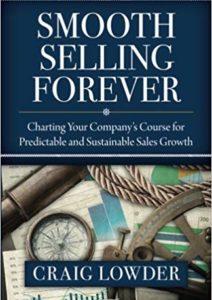The America’s Cup race team is highly selective about which sailors are allowed to crew the ship. If the team wants to win, the best people are needed. A company should be equally selective about who sells its products or services. Your salespeople are your face to the customer and they play a large role in the growth of the company. Having the right people at the helm and in every support position on your sales team leads to great wins. Don’t settle for less if you are serious about winning with a “smooth selling” team.
Once your smoothing selling crew is aboard, then you need to do everything you can to enable them to be their best and sell.
System One: Hiring
It all starts here. Hiring is too important to leave to a seat-of-the pants approach. A hiring process should employ a series of time-tested steps. A person within the organization should be assigned responsibility for each step of the hiring process and a timeframe followed. Not only will this process help you identify and recruit the best people, but it also ensures a fair and consistent hiring process.
System Two: Training
Onboarding (new hire training) is as important as hiring right. A company should develop a checklist of onboarding steps for new salespeople. In addition to basic HR items, members of the sales team need to be trained on company products and services, sales processes, as well as marketing and sales tools to name a few. But good teams don’t stop training after onboarding. In addition to initial training, ongoing weekly coaching and mentoring is critical to ensuring long-term sales success.
System Three: Sales/Buying Process
A defined and documented sales process, mirroring the customer’s buying journey, gives a company a game plan or in nautical terms, a navigational map for making sales. It helps identify potential roadblocks and the tools to overcome them. The process also gives the organization a common language to discuss the status of a potential deal, the probability of making a sale, and where a breakdown might be occurring.
System Four: Goal Setting and Budgeting
Goal setting and budgeting require serious conversations and then memorializing the results of those conversations in writing. A company should have standardized worksheets for documenting goals and action plans for the year. Once a goal is determined, start the process of thinking backwards to determine the necessary action steps required to reach the goal. This process will help you identify where more resources or tools are needed to reach the goal. Setting quotas and expense budgets require constructing a mathematical formula based on a number of variables, all of which impact the sales process.
System Five: Forecasting
Another area that needs attention and mathematical rigor is forecasting. What can you accomplish with your existing resources? How many leads need to be in the sales funnel to achieve your results? Spend some time identifying the answers to these critical questions. Sloppy inputs will produce sloppy results.
There is a sales axiom that not all prospects are created equal. To determine where best to focus your resources, begin with a targeting analysis of your ideal customers. Which customers value your products or services the most? Which ones will pay higher margins for your unique offering? Which ones have the strongest pain points that your company can alleviate?
Start this exercise with the sales team by identifying your top twenty prospective deals by customer. The objective is to determine potential spend by product or solution sets. The good news, or hard truth, is critical for forecasting future sales.
System Six: Performance Metrics
In sales, performance metrics are about keeping score while the game is being played. So you can make course corrections to stay on track. For a moment, let’s depart from the metaphor of sailing. Sailing at its core is a race and it is easy to tell if you are winning or losing a race. Imagine instead a sport like baseball or football, and the importance of the scoreboard. A good sales scorecard provides a read-out of all the key activity- and results-based metrics required to achieve predictable and sustainable success, both on an individual and team roll-up basis. It shows you your strengths and weaknesses in real time. This is a published look at targets and average performance on a week-by-week basis. Use this data to course correct and stay on track to achieving your goals.
System Seven: Performance Evaluation
Performance planning and assessment should be done on a regular basis. When done right, this is a communication tool that is a key part of sales enablement. Elements of a written planning and assessment template should include the following:
- Role mandate, based on business objectives and priorities
- Key accountabilities and accomplishments
- Performance objectives and accomplishments
- Personal effectiveness delivering results and working collaboratively
- Development objectives to improve skills and knowledge
- Overall summary of contributions
- Performance rating (exceptional, successful, below expectations)
System Eight: Technology
A customer relationship management (CRM) system can improve a company’s relationship with existing customers, facilitate its quest to secure new prospective customers, as well as win back former customers. One of the prime benefits of using a CRM system, one that is customized to support your business needs, is enhancing customer satisfaction. By using this tool, all dealings involving servicing, marketing, and selling your products or services to customers can be carried out (and documented) in an organized and systematic way. Using the data collected, a company can improve the effectiveness of marketing campaigns and improve sales efficiency. A CRM system also facilitates upselling and cross selling.
For more tips on how to implement smooth selling techniques that enable your sales team to achieve its goals, check out my book Smooth Selling Forever.
Pipeliner CRM empowers precision sales enablement.Get your free trial of Pipeliner CRM now.













Comments